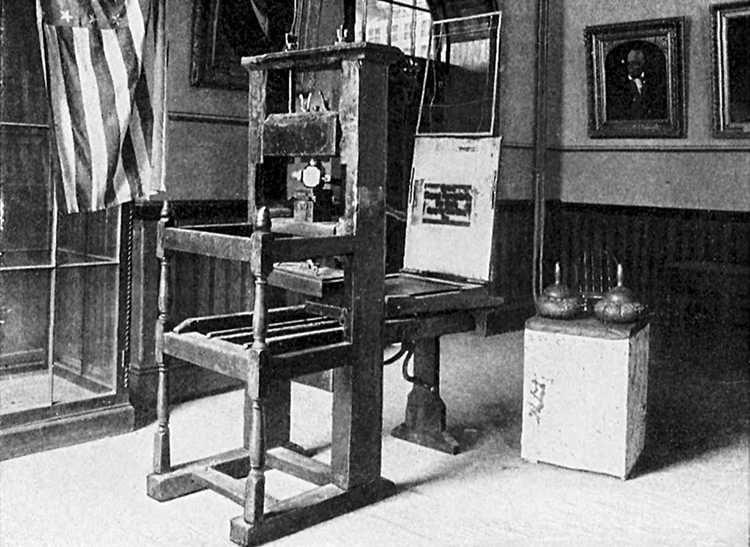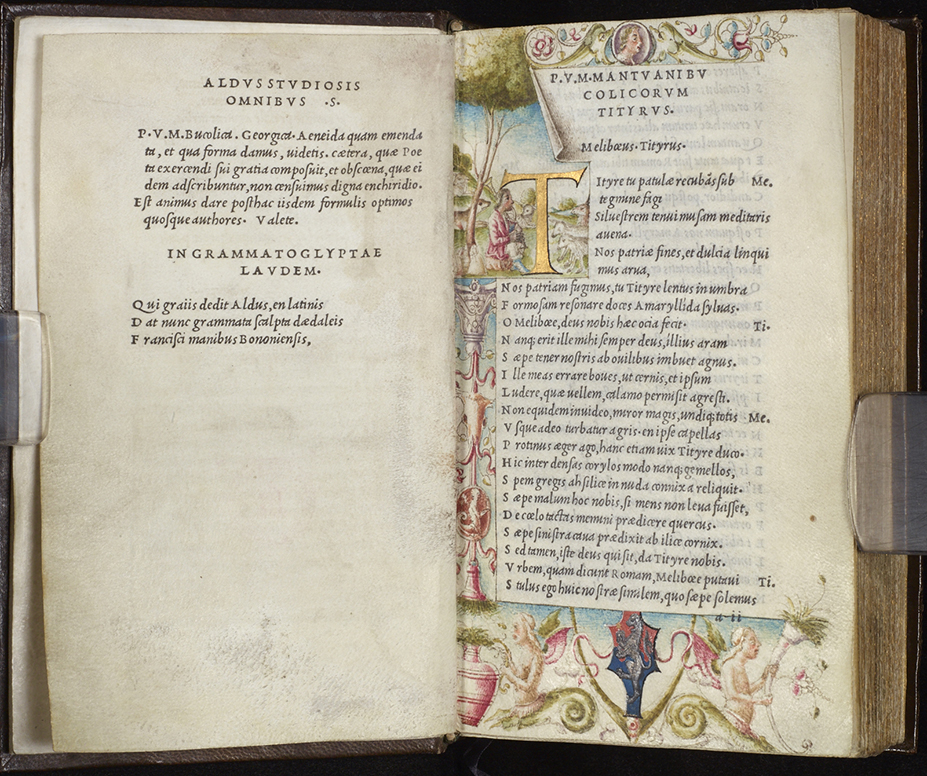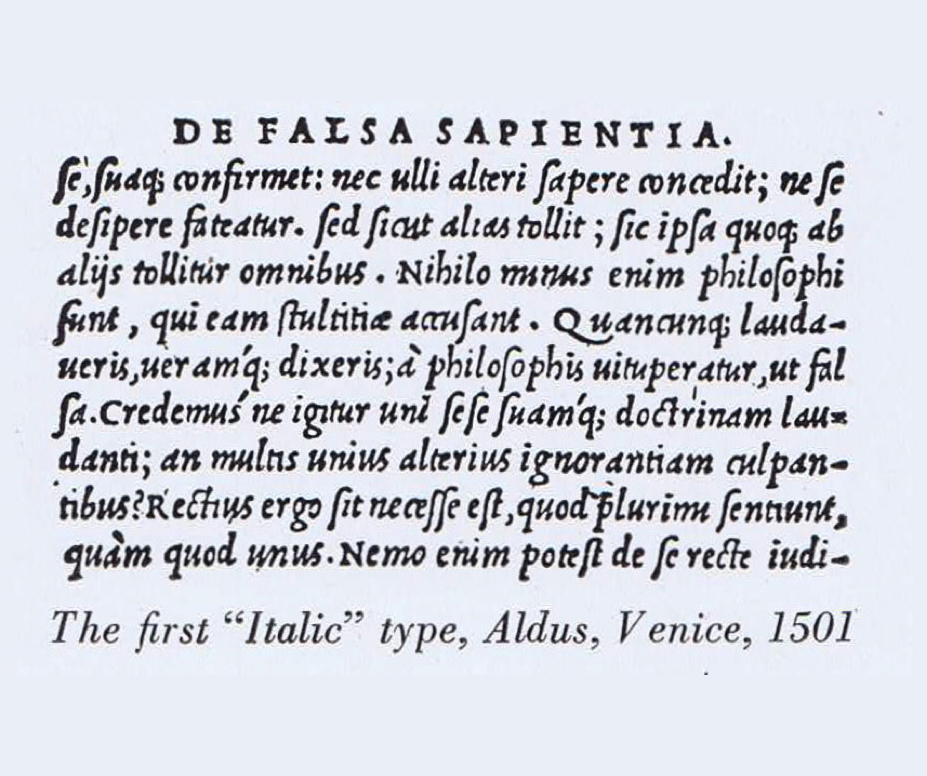Pre-Venetian
ABCDEFGHIJKLMNOPQRSTUVWXYZ
abcdefghijklmnopqrstuvwxyz
Pre-Venetian, also called Ancient, typefaces are inspired by historical forms from before the 15th century. Many include the Incised (Antique) and Fraktur (Blackletter) styles. Pre-Venetian typefaces were modeled after letters carved in stone. Blackletter is a style of calligraphy using vertical, curved, and angled strokes. Pre-Venetian type wasopular from the Middle Ages through the Renaissance.
1440
Johannes Gutenberg invents the printing press using metal movable type and a screw press.

The process used a punch made of steel with a mirrored image of a letter struck into metal and placed into a matrix to form a page that was inked and pressed into paper.
1455
The older medium of the scribes was reflected in the first Blackletter prints.

The letterforms in Gutenberg’s famous 42-Line Bible were based on liturgical scripts of the era; Textura Quadrata, a form of blackletter.

Incised (Antique)

Fraktur (Blackletter)




